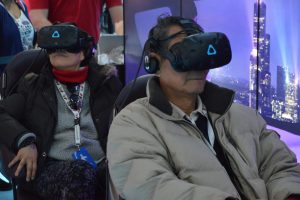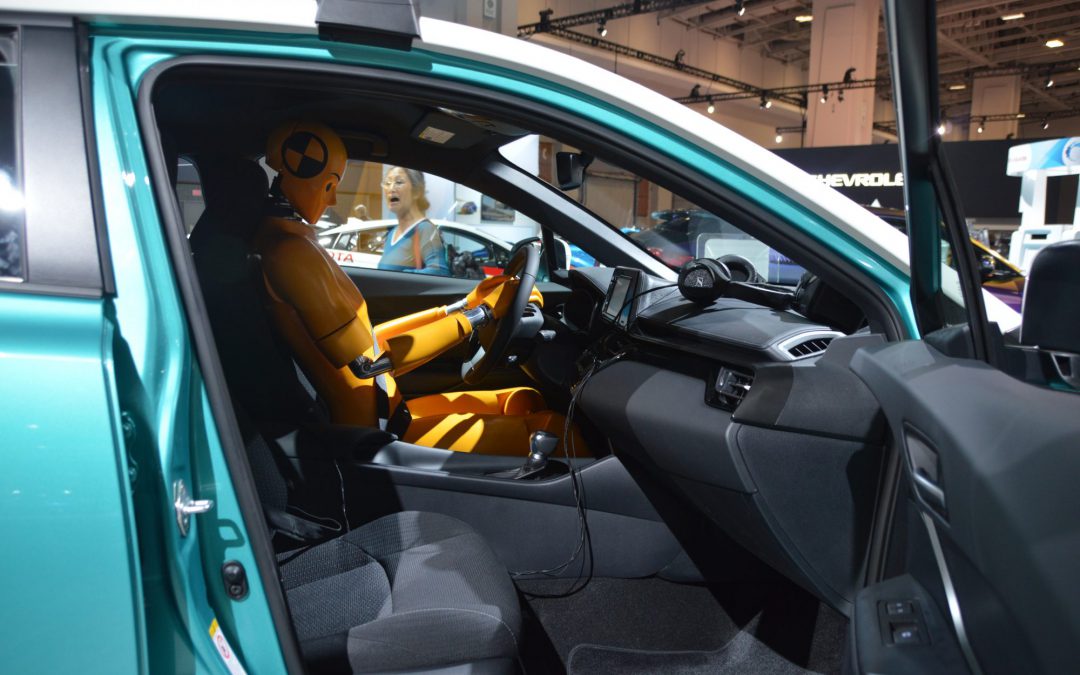A Tesla Model S that was cruising at highway speeds rammed into the back of a parked fire truck on a freeway in Culver City, CA in late January. The man behind the wheel claimed his car was running on Tesla’s enhanced autopilot system. But shouldn’t he still have seen, and stopped for, the red engine up ahead?
The crash highlights a tension in the race toward self-driving car technology. When cars start doing the work, drivers overestimate the capabilities of their cars and disengage entirely. Advocates and lawmakers are calling on car companies to educate drivers about what their cars will – and won’t do.
“We are at the beginning of a brave new world, at the advent of innovative technologies in autonomous vehicles,” said Joan Claybrook, a former administrator of the National Highway Traffic Safety Administration.
A car’s autonomy is rated on a six-step scale, from Level 0, a normal car, to Level 5, where drivers will enter a destination and sit back for the ride.
Nearly all autonomous features available on showroom floors today are still at Level 2. Cars can park themselves and monitor lane lines, but watching the road should still be a human task. Still, some drivers assume Level 2 vehicles can “take control,” like when a Tesla driver with a high blood alcohol content said his car was doing the driving.
There’s a crucial switch between Level 2, partial automation, and Level 3, conditional automation — responsibility for monitoring the driving environment becomes the car’s problem, not the driver’s. Claybrook said driverless technology is at a dangerous moment, where drivers don’t quite understand what their car’s system means.
“The interplay between humans and technology, technology being in control of driving, puts us at a risk. Driver distraction could have been a deadly factor in the Tesla crash [with the firetruck],” Claybrook said.
New “Enhanced Autopilot” technology is a $5,000 option for Model X and Model S Tesla vehicles, which each run customers well over $60,000. These vehicles are all equipped with the capability for full autonomy, though that won’t be available for years.
Tesla’s website touts the power of its autopilot technology, like how it can switch lanes, switch freeways and even be summoned from a garage. But the Model S manual outlines circumstances where this safety system might fail, like when the car is approaching a stationary object.
While automakers race to the marketplace with new autonomous safety features, and companies like Alphabet’s Waymo commit to make self-driving cars commercial, incidents like the Tesla crash signal a need for caution. Proposed Senate legislation would require education programs for owners of self-driving cars to make sure consumers know what they’re getting into before they get behind the wheel.
But Jason Levine, an advocate with the Center for Auto Safety, said it would be hard to imagine an education program for the “endless variations” of autonomous technology.
“Education has not been effectively addressed by those that are working to get the cars to the marketplace without thinking through the ramifications,” Levine said.
“Consumers need to know what they can and cannot do, and how they can interact with vehicles, or we’ll have consumer pushback,” said Sen. Gary Peters, a Michigan Democrat who co-authored the bill.
Josh Drennen, a product specialist at Toyota, said while totally self-driving vehicles are far off, the autonomous features on current cars have some similarities to the future vehicles. The technology is “rolling out in phases” like Toyota’s Safety Sense P, an active crash collision system that functions with Level 2 autonomy. Similar to Tesla’s Model S, it runs a pre- collision system, lane departure alert, pedestrian detection function, steering assist and radar cruise control.
Education will mitigate risk by ensuring that drivers understand their cars, Drennen said. And, “to push a button and now trust” will be a tall order for some consumers, like the elderly.

Auto show-goers experience driverless technology through a virtual headset at Toyota’s exhibit in the 2018 Washington Auto Show. (Anna Laffrey/Medill News Service)
So Toyota is using virtual reality technology to educate consumers on their vehicles: both current models and future concepts.
It was on display in February at the Washington Auto Show. People lined up for a turn in two leather chairs as a digital screen flashed futuristic cars, cityscapes and young professionals on a screen behind them. When they sat down, they were strapped into a virtual reality headset; goggles and earphones tuned them into the futuristic world on the screen.
In three minutes, they traversed a city in a driverless car. They started in the front seat, where there’s a steering wheel that they need not bother touching. The car makes turns, stops for pedestrians, avoids a speeding car and recommends a restaurant. As friends load into the car along the way, they switch to the back seat, which swivels around. The windows and dashboard are a translucent touchscreen, where the rider checks messages.
There’s a full-size mock-up of the “concept car,” which plays off of tech trends, just beyond the VR experience. The engines are in the wheels, so the interior is roomy. There are laser headlights. One onlooker said “this can’t be too far off.”
At the same auto show, folks could climb into the passenger seat of a 2018 RAV4 Hybrid for a VR demonstration of its Safety Sense P technology. In a similar three minutes, a bright yellow virtual dummy runs you through Toyota’s Safety Sense features. It teaches you about the auto-braking, lane-sensing, and steer-shifting technology as the seat rumbles beneath you.
Peers have launched similar efforts. Waymo, Alphabet’s self-driving car company, partnered with organizations like Mothers Against Drunk Drivers and the National Safety Council to form a “Let’s Talk Self-Driving” Campaign. The campaign promotes an auto recall database and a website called MyCarDoesWhat.org to educate drivers on new safety technologies to prevent crashes.
Ranger Giordano, a product specialist for BMW, joined Department of Transportation agents for a showcase of Level 2 and Level 3 autonomous driving technology at a facility in Nevada. Product specialists like Giordano led demonstrations of the cars’ capabilities: emergency braking, self-parking, lane switching.
“They thought it was amazing,” Giordano said. “Some [DOT agents] had those features in their own cars, but said they had just never bothered to turn them on. They didn’t know how they worked.”
Drivers of Level 2 vehicles can understand the partial autonomy of their vehicles as an “aid to the senses, which can be foggy at times,” Giordano said . “It’s a guardian angel.”
For Giordano, the dilemma of adapting to partial autonomy can work in reverse. When he climbs into his old station wagon, which he held onto after he upgraded to a BMW 5-series, he has to adjust.



